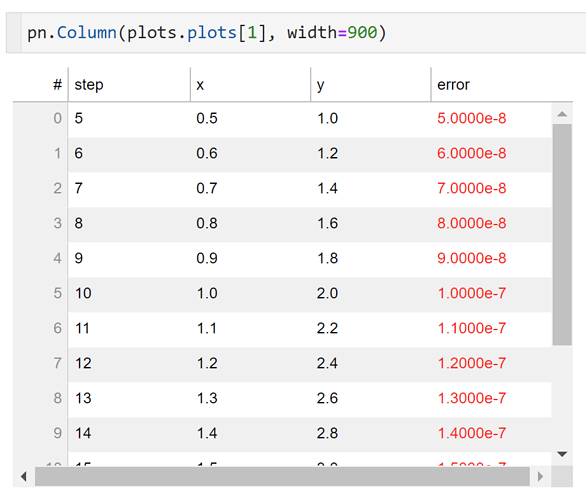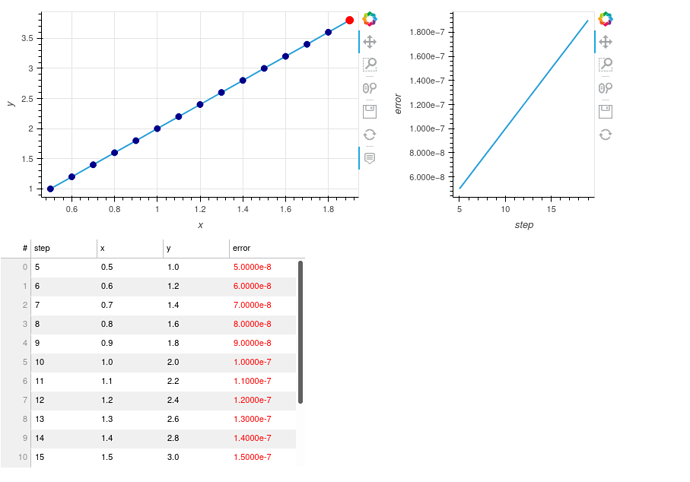Getting really rusty: I wanted to use an hv.Buffer to update two Graphs and a table.
For the life of me, I can’t get the layout pn.Column( pn.Row( h_xy, h_err), h_tbl )
I’d appreciate help getting this to work, or a better solution?!
from IPython.core.interactiveshell import InteractiveShell
InteractiveShell.ast_node_interactivity = "all"
import time
import numpy as np
import pandas as pd
from bokeh.models.widgets import HTMLTemplateFormatter
import param
import holoviews as hv; hv.extension("bokeh", logo=False)
import panel as pn; pn.extension()
class GraphicalMonitorA():
"""monitor the error evolution of an iterative scheme"""
def __init__(self, sz=10,use_log=False):
data_def = {'step':int, 'x': float, 'y': float, 'error': float }
data = pd.DataFrame( {i:[] for i in data_def.keys()}, columns=data_def.keys())\
.astype(dtype=data_def)
self.buffer = hv.streams.Buffer(data, length=sz, index=False)
self.use_log = use_log
def monitor_data(dat):
self.buffer .send( pd.DataFrame( [[dat[0], dat[1], dat[2], dat[3] ]],
columns=data_def .keys() ).astype(dtype=data_def ))
def plot(data):
if data.empty:
return ((hv.Scatter([],'x','y')*hv.Curve([],'x','y')*\
hv.Scatter([],'x','y')).opts(width=500,xticks=4,yticks=4, tools=['hover'], show_grid=True,
title='Solution Estimate')+\
hv.Curve([],'step','error').opts(logy=self.use_log, yticks=4, show_grid=True,
title='Error') +\
hv.Table( data ).opts(height=450)
)
h_last_point = hv.Scatter( (data['x'].iloc[-1], data['y'].iloc[-1]), 'x', 'y' ).opts( size=10,color='red')
h_points = hv.Curve( (data['x'],data['y']), 'x', 'y' )*\
hv.Scatter( (data['x'],data['y']), 'x', 'y' ).opts(color='darkblue',padding=.05,size=8, tools=['hover'], show_grid=True)
h_error = hv.Curve( (data['step'],data['error']), 'step', 'error' )
h_tbl = hv.Table( data )
h = (h_points.opts(xticks=4,yticks=4) * h_last_point).opts(width=500) +\
h_error.opts(padding=.05,xticks=4,logy=self.use_log) +\
h_tbl
return h.cols(2)
self.monitor = monitor_data
self.plot = plot
self.dmap = hv.DynamicMap( self.plot, streams=[self.buffer ])
def reset_plots(self):
self.buffer .clear()
plots = GraphicalMonitorA(5,use_log=False)
plots.dmap
for i in range(5):
plots.monitor( [i, 0.1 * i, 0.2 *i, 1e-12 *i] )

